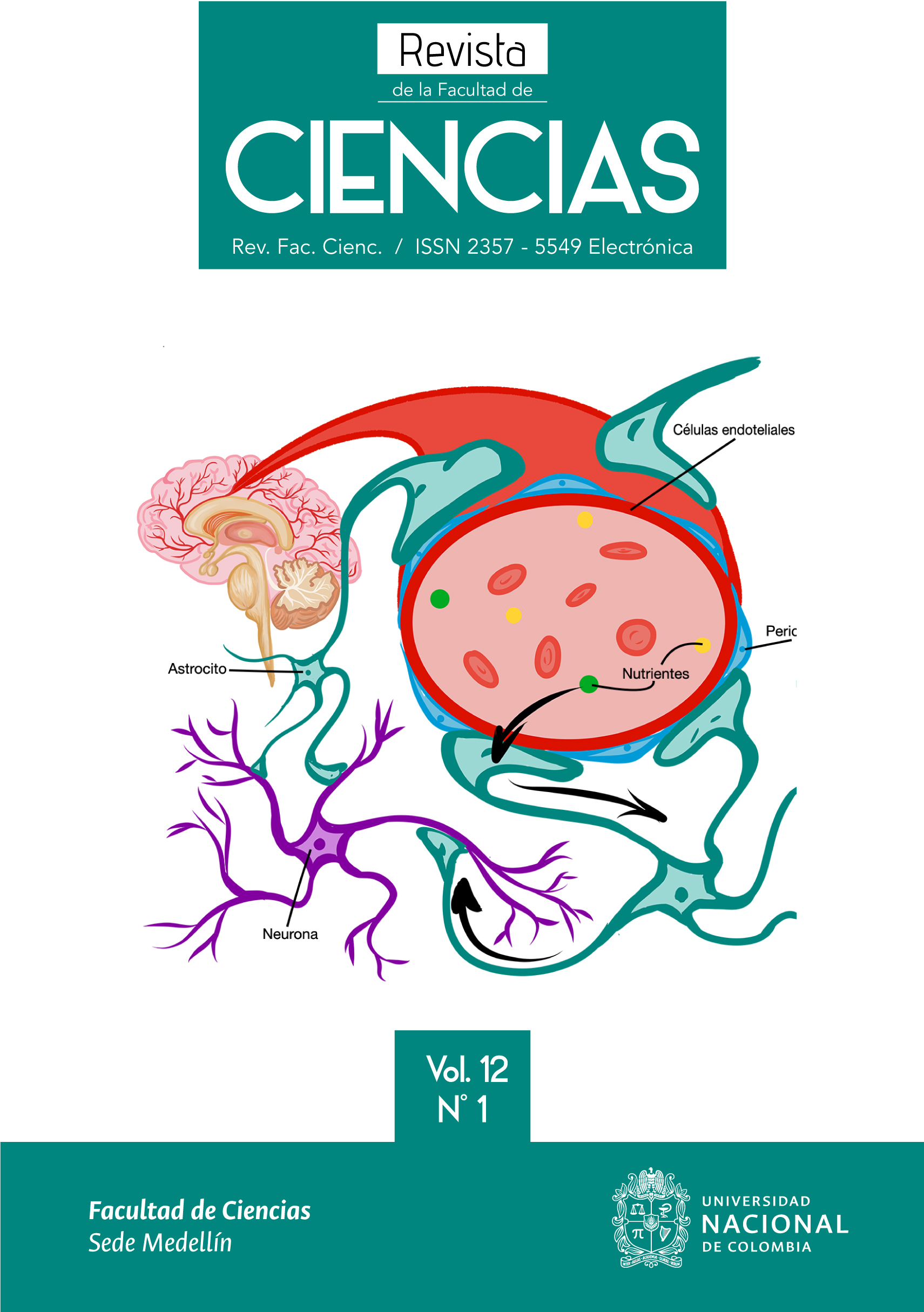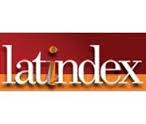¿CONFINA EL ESPACIO LIBRE A LAS ONDAS Y LAS PARTÍCULAS?
CAN FREE SPACE CONFINE WAVES AND PARTICLES?
DOI:
https://doi.org/10.15446/rev.fac.cienc.v12n1.102032Palabras clave:
interferencia, difracción, confinamiento, potencial geométrico, entrelazamiento espacial (es)Interference, Diffraction, Confinement, Geometric Potential, Spatial Entanglement (en)
Descargas
En física no-relativística, el espacio libre es considerado desde una perspectiva Newtoniana, es decir, como un escenario uniforme e isotrópico que no interviene en el comportamiento de los entes físicos. En este contexto, la interferencia y la difracción son descritas por la superposición de funciones de onda, lo cual aporta una explicación fenomenológica de esos comportamientos para las ondas, pero sólo provee una estrategia matemática de predicción para las partículas. Se muestra a continuación que la elaboración de una explicación fenomenológica de estos comportamientos, basada en un único principio, conduce a considerar el espacio libre como un ente físico que confina la energía de las ondas y las partículas en pozos Lorentzianos espacialmente estructurados por un potencial geométrico, el cual es activado por una condición de no-localidad preparada sobre la máscara de interferencia. Si esta condición es suficientemente fuerte, los pozos de confinamiento estarán espacialmente entrelazados. También se muestra que difracción e interferencia son términos que denotan modulaciones de confinamiento en diferentes regiones de la banda de frecuencias espaciales. Este desarrollo es puramente teórico, respaldado por modelamiento numérico y reproduce de manera precisa los resultados de experimentos reportados por otros autores.
In non-relativistic physics, free space is considered from a Newtonian perspective, that is, as a uniform and isotropic scenario that cannot affect the behavior of physical entities propagating in it. In this context, interference and diffraction are described by the superposition of wave functions that provides a phenomenological explanation in case of waves, but only gives a mathematical prediction strategy for particles. In this paper, it is shown that the development of a phenomenological explanation of both behaviors, based on a unique and the same principle, leads to consider free space as a physical entity that confines the wave energy and the particles in Lorentzian wells, spatially structured by a geometric potential which is activated by a prepared non-locality condition at the interference mask. If this condition is strong enough, the wells become spatially entangled. It is also shown that diffraction and interference are terms that denote confinement modulations in different regions of the spatial frequency band. This development is purely theoretical, supported by numerical modeling and accurately reproduces the results of well-known experiments.
Referencias
Arfken, G. (1970). Mathematical Methods for Physicists, 2nd edition. Academic Press.
Bach, R., Pope, D., Liou S. H. & Batelaan, H. (2013). Controlled double-slit electron diffraction. New J. Phys., 15, 033018. DOI: https://doi.org/10.1088/1367-2630/15/3/033018
Born, M. & Wolf, E. (1993). Principles of Optics. Oxford.
Case, W. B., Tomandl, M., Deachapunya, S. & Arndt, M. (2009). Realization of optical carpets in the Talbot and Talbot-Lau configurations. Opt. Exp. 17, 20966–20974. DOI: https://doi.org/10.1364/OE.17.020966
Castañeda, R. (2016). Fundamentos conceptuales de una Teoría de Interferencia unificada para ondas y partículas. Revista Facultad de Ciencias Universidad Nacional de Colombia, Sede Medellín, 5, 1-22. DOI: https://doi.org/10.15446/rev.fac.cienc.v5n1.55861
Castañeda, R. & Muñoz, H. (2016). Spectrum of classes of point emitters: new tool for nonparaxial optical field modeling. J. Opt. Soc. Am. A, 33, 1421 – 1429. DOI: https://doi.org/10.1364/JOSAA.33.001421
Castañeda, R., Matteucci, G. & Capelli, R. (2016a). Quantum interference without wave – particle duality. J. Mod. Phys., 7, 375 – 389. DOI: https://doi.org/10.4236/jmp.2016.74038
Castañeda, R., Matteucci, G. & Capelli, R. (2016b). Interference of Light and of Material Particles: A Departure from the Superposition Principle. Hawkes, P.H. editor, Advances in Imaging and Electron Physics, Vol. 197, Burlington: Academic Press, p. 1-43. DOI: https://doi.org/10.1016/bs.aiep.2016.08.001
Castañeda, R. & Matteucci, G. (2017). New physical principle for interference of light and material particles. Hawkes, P.H. editor, Advances in Imaging and Electron Physics, Vol. 204, London: Elesevier – Academic Press, Ch. 1. DOI: https://doi.org/10.1016/bs.aiep.2017.09.001
Castañeda, R. (2017). Discreteness of the real point emitters as a physical condition for diffraction. J. Opt. Soc. Am. A 34, 184 – 192. DOI: https://doi.org/10.1364/JOSAA.34.000184
Castañeda,R. & Moreno, J. (2019). Three-dimensional nonparaxial characterization of physical point sources. J. Opt. Soc. Am. A 36, 1657 – 1662. DOI: https://doi.org/10.1364/JOSAA.36.001657
Castañeda, R., Moreno, J., Colorado, D. & Laverde, J. (2020). 3D non-paraxial kernel for two-point correlation modelling in optical and quantum interference at the micro and nano-scales. Phys. Scr. 95, 065502 (15pp). DOI: https://doi.org/10.1088/1402-4896/ab7ebb
De Martini, F., Denardo, G. & Zeilinger, A. (1994). Quantum Interferometry. World Scientific. DOI: https://doi.org/10.1142/9789814535311
Feynman, R., Leighton, R. & Sands, M. (1965). The Feynman Lectures on Physics, Volume 3. Addison−Wesley. DOI: https://doi.org/10.1119/1.1972241
Frabboni, S., Gabrielli, A., Gazzadi, G. C., Giorgi, F., Matteucci, G., Pozzi, G., Cesari, N. S., Villa, M. & Zoccoli, A. (2012). The Young-Feynman two-slit experiment with single electrons: buildup of the interference pattern and arrival-time distribution using a fast-readout pixel detector. Ultramicroscopy, 116, 73 – 76. DOI: https://doi.org/10.1016/j.ultramic.2012.03.017
Juffmann, T., Milic, A., Muellneritsch, M., Asenbaum, P., Tsukernik, A., Tuexen, J. & Arndt, M. (2012) Real-time single-molecule imaging of quantum interference. Nature Nanotech. 7, 297–300. DOI: https://doi.org/10.1038/nnano.2012.34
Matteucci, G., Pezzi, M., Pozzi, G., Alberghi, G., Giorgi, F., Gabrielli, A., Semprini, N., Villa, M., Zoccoli, A., Frabboni, S. & Gazzadi, G. (2013). Buildup of interference patterns with single electrons. Eur. J. Phys., 34, 511 – 517. DOI: https://doi.org/10.1088/0143-0807/34/3/511
Scully, M.O. & Zubairy, S. (1997) Quantum Optics. Cambridge University Press. DOI: https://doi.org/10.1017/CBO9780511813993
Young, T. (1804). The Bakerian Lecture: Experiments and Calculations Relative to Physical Optics. Phil. Trans. Roy. Soc. Lon. 94, 1-16. DOI: https://doi.org/10.1098/rstl.1804.0001
Cómo citar
APA
ACM
ACS
ABNT
Chicago
Harvard
IEEE
MLA
Turabian
Vancouver
Descargar cita
Licencia
Derechos de autor 2023 Revista de la Facultad de Ciencias

Esta obra está bajo una licencia internacional Creative Commons Atribución-NoComercial-SinDerivadas 4.0.
Los autores o titulares del derecho de autor de cada artículo confieren a la Revista de la Facultad de Ciencias de la Universidad Nacional de Colombia una autorización no exclusiva, limitada y gratuita sobre el artículo que una vez evaluado y aprobado se envía para su posterior publicación ajustándose a las siguientes características:
1. Se remite la versión corregida de acuerdo con las sugerencias de los evaluadores y se aclara que el artículo mencionado se trata de un documento inédito sobre el que se tienen los derechos que se autorizan y se asume total responsabilidad por el contenido de su obra ante la Revista de la Facultad de Ciencias, la Universidad Nacional de Colombia y ante terceros.
2. La autorización conferida a la revista estará vigente a partir de la fecha en que se incluye en el volumen y número respectivo de la Revista de la Facultad de Ciencias en el Sistema Open Journal Systems y en la página principal de la revista (https://revistas.unal.edu.co/index.php/rfc/index), así como en las diferentes bases e índices de datos en que se encuentra indexada la publicación.
3. Los autores autorizan a la Revista de la Facultad de Ciencias de la Universidad Nacional de Colombia para publicar el documento en el formato en que sea requerido (impreso, digital, electrónico o cualquier otro conocido o por conocer) y autorizan a la Revista de la Facultad de Ciencias para incluir la obra en los índices y buscadores que estimen necesarios para promover su difusión.
4. Los autores aceptan que la autorización se hace a título gratuito, por lo tanto renuncian a recibir emolumento alguno por la publicación, distribución, comunicación pública y cualquier otro uso que se haga en los términos de la presente autorización.
5. Todos los contenidos de la Revista de la Facultad de Ciencias, están publicados bajo la Licencia Creative Commons Atribución – No comercial – Sin Derivar 4.0.
MODELO DE CARTA DE PRESENTACIÓN y CESIÓN DE DERECHOS DE AUTOR





















